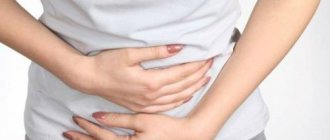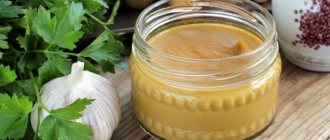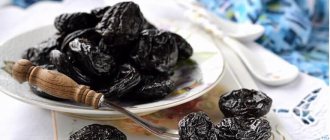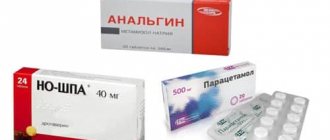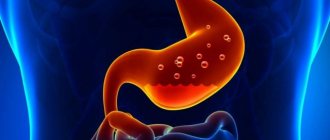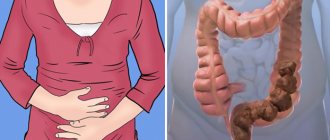What is dysbiosis
Dysbacteriosis is an imbalance of microflora (change in the quantity or qualitative composition of beneficial bacteria) on the surface of the skin or in the digestive organs. With these disorders, the number of lacto- and bifidobacteria decreases, but the number of pathogenic and pathogenic representatives increases.
This pathological condition is not a disease. Often it is a consequence of other diseases. There is no disease with this name in official international sources. In the CIS countries, this term is common, but is used, as a rule, only to characterize the state of the digestive system.
Symptoms of dysbiosis
Dysbacteriosis manifests itself as a violation of the functions of the digestive system and the general well-being of the child. Without the participation of normal microflora, fermentation and putrefactive processes prevail in the intestine, which are clinically manifested:
- bloating (flatulence);
- abdominal pain;
- unstable stools with uneven coloring and a foul odor, and diarrhea may alternate with constipation;
- the presence of mucus, greens, and lumps of poorly digested food in the stool;
- anxiety in infants and irritability in older children;
- loss of appetite.
By multiplying in the intestines, pathogenic microbes release their waste products. They exhibit a toxic effect on the intestinal mucosa, causing inflammation, impaired absorption and motility. In order for normal flora to quickly take root in “extreme” conditions, it needs help - to provide proper nutrition to the child. It should not irritate the intestinal walls, help eliminate toxic substances and provide optimal conditions for the growth of beneficial microorganisms.
Causes
Possible causes of intestinal microflora disturbance:
- frequent, unorganized or uncontrolled use of drugs aimed at destroying microorganisms; Among such medications, the most common are antibiotics;
- deterioration of immunity, decrease in the level of the body’s protective reaction;
- violation of peristalsis and motility of the small and large intestine;
- infectious intestinal diseases;
- dysfunction of the digestive system and exacerbation of diseases such as gastritis, colitis, peptic ulcer;
- surgical intervention: previous operations on the stomach, intestines, gall bladder, bile ducts or pancreatic ducts;
- hormonal disorders that have an indirect effect on the general condition of the body, including the state of the intestinal microflora.
- disruption of biorhythms, the need to get used to a new climate;
- psychological shocks, stress;
- intestinal obstruction;
- disorders leading to decreased acidity.
Eating disorder:
- the predominance of flour, sweet, fatty or spicy foods in the diet;
- excessive consumption of fast food and unhealthy, insufficiently processed foods;
- consumption of foods with low nutritional value;
- a sharp change in the usual diet (for example, after moving to a country in a different climate zone);
- lack of fermented milk products;
- insufficient amount of plant food;
- the use of chemical additives that can negatively affect the state of microflora;
- a sharp reduction in the amount of food habitual for the body due to diet.
Main reasons
Doctors find it difficult to name specific reasons for the development of dysbacteriosis. But there are a number of factors that provoke the occurrence of this disease. These include:
- poor nutrition;
- a sudden change in diet or the introduction of unusual foods to the menu;
- taking antibiotics, hormonal drugs;
- stress;
- pathologies of the digestive system;
- allergic reactions;
- surgical intervention;
- intestinal infections and viral diseases;
- helminthic infestations.
In general, any disorder of the immune system can trigger the development of dysbiosis. Its weakening has an extremely negative effect on the balance of microflora throughout the body, and not just in the digestive tract.
Symptoms and signs
Symptoms of intestinal microflora disorders may include various types of diseases, pathologies and abnormalities:
- diarrhea (diarrhea);
- constipation;
- stomach ache;
- bloating;
- nausea and vomiting;
- allergic manifestations on the skin: rash, itching and redness;
- swelling of the bronchi, spasms and cough;
- lowering blood pressure;
- anemia;
- fungal infections of the skin, herpes;
- increased frequency of colds;
- due to poor absorption of nutrients, hypovitaminosis and protein deficiency occur;
- metabolic disease;
- sudden weight loss;
- headache;
- loss of appetite;
- fatigue, weakness.
Symptoms and consequences
The intestines of a healthy adult and child contain beneficial bacteria that promote the digestion of food, stimulate the immune system, produce and absorb vitamins and useful minerals.
A lack of bacteria in the intestines provokes the entry and reproduction of pathogenic microorganisms in the human body; their excessive quantity causes significant harm to health.
This failure is called dysbiosis or dysbacteriosis - a failure in the qualitative and quantitative composition of the beneficial intestinal flora. The problem is widespread in both adults and children; it is often observed after antibiotics that suppress pathogenic and beneficial bacteria, due to poor ecology and poor nutrition. Dysbacteriosis is not a disease; it can be both a consequence and a cause of true pathologies.
Dysbacteriosis can be identified by the following characteristic signs: diarrhea or constipation, greenish-colored feces mixed with mucus, flatulence, allergic skin rashes, decreased appetite and loss of strength.
The consequences of dysbacteriosis are:
- Anemia.
- Metabolic disease.
- Intestinal diseases (gastritis, colitis, duodenitis).
- Biliary dyskinesia.
Depending on the stage of dysbiosis, appropriate treatment is prescribed: diet, taking medications containing obligate flora (lactobacteria and bifidobacillus), drugs that stimulate their growth in the intestines.
Video:
The importance of proper nutrition at home
Diet for intestinal dysbiosis (in adults and children) is one of the most important components of preventive measures and rehabilitation therapy. In case of disturbances in the functioning of the digestive system, a properly selected diet and a well-established diet are required, observing the correct intervals between meals.
Goals of proper diet during treatment:
- restoration of normal metabolism;
- normalization of intestinal motor function;
- normalization of the qualitative and quantitative balance of beneficial microorganisms;
- restoring the body's ability to absorb nutrients.
A therapeutic diet for dysbiosis helps in the following ways:
- Foods that include probiotics (compounds that contain beneficial microorganisms) help replenish your gut flora. These products include: yogurt, kefir, cheese, curd mass, sauerkraut, leeks, onions (green and onions), rye bread, soy products.
- Products containing prebiotics are needed for the nutrition and development of beneficial bacteria. Prebiotics are found in large quantities in the following foods: milk, fruits, Chinese cabbage, Brussels sprouts, cereals, corn, soybeans, garlic, onions, whole grain bread.
- Vitamins and minerals are required for normal metabolism and nutrition.
- A large amount of mineral water allows you to remove toxins and harmful compounds from the body.
- A well-established regime allows the body to get used to measured work.
Permitted and prohibited products
| Authorized products | Prohibited Products |
| vegetable soups or soups made from lean meat (chicken, beef) | fatty meat (pork, lamb) |
| some types of fish (perch, pike, pike perch) | fatty fish (salmon) |
| porridge (oatmeal, buckwheat, pearl barley) | sausages, canned food |
| steamed or stewed cutlets and meatballs | onion garlic |
| compotes and jelly from fruits and berries | pickles, marinades (salted tomatoes and cucumbers, sauerkraut) |
| freshly squeezed juices (carrot, cranberry, pomegranate) | peas, beans |
| fermented milk products (ryazhenka, yogurt, cottage cheese, yogurt) | brown rice |
| boiled zucchini and cauliflower, fresh cucumbers | mushrooms |
| fresh herbs (cilantro, dill, parsley, basil, celery) | baked goods, jam, chocolate |
| baked apples, wheat crackers | alcoholic and carbonated drinks (wine, beer, kvass, fruit juice) |
Properties of useful products:
- lean meat is the main source of energy and protein;
- porridges - contain useful microelements necessary for normal intestinal function;
- vegetable dishes - improve metabolism and supply the body with the necessary amount of fiber;
- fermented milk products - maintain the balance of intestinal microflora and create a favorable environment for the growth and reproduction of beneficial bacteria;
- freshly squeezed juices - help remove toxins from the body;
Video on the topic:
Principles of nutritional treatment at home
A diet for intestinal dysbiosis in adults can normalize the function of the digestive system. Certain principles must be adhered to.
Basic principles of proper nutrition:
- To avoid overloading the body, it is recommended to eat small portions at intervals of about 2-3 hours. It is advisable to eat at strictly allotted times.
- It is necessary to carefully consider the diet. When treating pathologies of the gastrointestinal tract, a healthy, balanced and nutritious diet is required. The body must receive all the necessary vitamins, minerals, as well as proteins, fats and carbohydrates.
- In addition to the above elements, during the recovery period the body will need foods rich in prebiotics. These are components that are not absorbed in the upper digestive organs, but begin to act when they enter the intestines. They are important for restoring the biological activity of beneficial microorganisms, as well as for further maintaining their vital functions. Due to the selective activity of these components, bifidobacteria and lactobacilli mainly develop in the body.
- You will also need to include in your diet foods rich in probiotics - components containing live cultures of beneficial microorganisms.
- Avoid products that contain components that stimulate the fermentation process.
- During the treatment process, it is necessary to monitor the processes occurring in the body. In case of allergic reactions or manifestations of individual intolerance to any product, it should be excluded.
- It is recommended to drink plenty of water during therapy. For diarrhea, this is necessary to restore after dehydration, and for constipation, to improve intestinal motility and break down hardened feces. It is better to give preference to still mineral water or purified water passed through a filter.
- It is not recommended to drink liquid immediately before or after meals. It dilutes gastric juice and interferes with normal digestion.
The menu should be selected depending on the patient's condition.
For diarrhea, it is recommended to do a short fast for 2-3 days. At this time, it is advisable to drink herbal infusions and decoctions, tea. For sweetness, you can add a little honey. Sugar should be excluded. You should also not eat foods such as fatty meat, fish, baked goods, and sweets.
The menu should include soups with fresh natural broth, cereals, and fermented milk products. If dysbiosis is accompanied by constipation, the menu should include bread with bran, kefir, puree and fresh fruit, juices, boiled vegetables.
In both cases, you need to eat regularly and in small portions. The interval between meals should be no more than 2-3 hours. A portion intended for one meal should not fit on a small plate.
Depending on the severity of the patient’s condition, various treatment regimens are prescribed:
| violation | treatment |
| slight decrease in the activity of beneficial bacteria | vitamins, prebiotics, inclusion of dietary products in the diet |
| the appearance of the first symptoms indicating a deterioration in the microflora | comprehensive intake of vitamins and minerals, diet, probiotics and prebiotics |
| changes in the qualitative composition of the intestinal microflora, the appearance of pathogenic bacteria in large quantities | enhanced diet, full therapeutic complex of nutrients, antibacterial treatment |
Let's deal with fermented milk?
To restore normal microflora, doctors recommend using, together with biological products, functional fermented milk products with “live” bifidobacteria introduced into them (bio-yoghurts, bio-kefirs, etc.). If a child is given them daily, then a sufficient number of living cells of lactic acid bacteria accumulate in his body. They attach to the walls of the intestine from the inside, filling the entire surface, and create a kind of protective “film” through which pathogens cannot break through. In addition, lactic acid bacteria create an unfavorable environment for dangerous intestinal inhabitants, in which they cannot actively reproduce.
In case of microflora disorders, children's biological products are preferable, although in principle, after three years, the child can also be given “adult” ones. What are the advantages of children's? They are produced only from premium milk; very strict requirements are also imposed on starter cultures, because fermented milk products containing live bacteria are not subject to sterilization. Another plus is that they have a lower acidity level than “adult” ones, so they are better tolerated by the child’s sensitive digestive system.
You should pay attention to the following indicators:
the concentration of living microorganisms in a fermented milk product must be at least 107 CFU/g of product (CFU - colony-forming units); shelf life: products containing live bacteria can be stored for no more than 1 month; Some bio-yogurts are enriched not only with beneficial microorganisms, but also with prebiotics.
To correct microflora, you need yoghurts without fruit or berry additives, flavorings, emulsions, etc. If the child does not like their taste, you can add jam, preserves, pieces of sweet berries and fruits, but it is better not to use sugar - it can cause bloating .
List of approved products
A diet for intestinal dysbiosis in adults will quickly restore the intestinal microflora and normalize the body’s activity.
| Can | it is forbidden | |
| flour products | cereals, bread made from whole grain unrefined flour | sweet pastries, bread made from premium white wheat flour, pasta, pies cooked in a frying pan |
| meat | beef, chicken, lean pork (steam or boil) | fried and fatty meat, sausage, canned food |
| fish | low-fat varieties: carp, hake, cod, pike perch | fatty varieties: salmon, sturgeon, flounder |
| eggs | scrambled eggs cooked in a double boiler, soft-boiled eggs (limit the quantity to 2 pieces per week) | fried, raw |
| dairy | fermented milk products, kefir, cottage cheese | whole and fat milk |
| vegetables | carrots, cabbage, pumpkin, zucchini, potatoes | turnips, spinach, cucumbers |
| fats | vegetable oil, butter | mayonnaise, lamb fat |
Diet after antibiotic therapy
Dysbacteriosis is most severe after long-term use of antibiotics, because these medications destroy not only pathogenic viruses and bacteria, but also beneficial microflora living in the intestinal tract. Therefore, the diet for intestinal dysbiosis that develops in adults after antibiotics, accompanied by diarrhea, includes not only the consumption of healthy foods, but also the use of enzymes and drugs to restore the microflora.
Taking medications alternately:
- At the first stage, sorbents are needed - Enterosgel, activated carbon. They cleanse the intestines of pathogenic bacteria killed by antibiotics.
- Next, you need enzyme preparations - Creon, Gastrofarm.
- To normalize the intestinal microflora, probiotics and prebiotics are taken.
Treatment menu for a week for constipation
Diet for intestinal dysbiosis (in adults and children) requires an individual approach. For disorders accompanied by constipation, it is recommended to consume those foods that will help mitigate the course of the disease and remove toxins from the body.
The figure shows an example of a diet for intestinal dysbiosis with constipation in adults.
An approximate menu would look like this:
| Days of the week | Breakfast | Lunch | Dinner | Afternoon snack | Dinner |
| Mon | Omelet cooked in a double boiler; cocoa with milk | Toast; green tea | Potato soup; meat stew; fruit and berry compote | Kefir and cinnamon bun | Chicken cutlets and béchamel sauce; mashed potatoes |
| W | Porridge made from crackers; coffee with milk | Fruit soufflé made from apples with berries | Casserole with meat and cabbage; the vinaigrette; tea | Bran bread; fish pate | Casserole with chicken and vegetables; rosehip decoction |
| Wed | Lazy dumplings; Herb tea | Ryazhenka | Borsch; buckwheat porridge; dried fruits compote | Boiled egg; fresh cucumbers | Boiled egg salad, herbs with sour cream; |
| Thu | Pumpkin casserole; cocoa | Carrot zrazy | Vegetable salad; pearl barley porridge; herbal tea | Kefir | Homemade muesli with pieces of fruit; herbal decoction |
| Fri | Stuffed apples with cottage cheese; green tea | Boiled egg | Dietary rassolnik; oatmeal; boiled beets with garlic and sour cream; fresh berry juice | Vegetable juice | Onion soup, buckwheat; fruit juice |
| Sat | Carrots; coffee with a little milk | Baked apples and pears | Chicken broth seaweed with sour cream; chicken stew | Boiled cauliflower | Stuffed fish with vegetables; kefir |
| Sun | Cottage cheese casserole with the addition of instant oatmeal; coffee | Pumpkin with honey sauce | Vegetable soup with pearl barley and pieces of beef; salad of fresh tomatoes, cucumbers and bell peppers; Orange juice | Finely chopped herring soaked in milk | Vegetable puree, fish with milk sauce; compote |
How to create a diet for dysbiosis: what is possible, what is not
Firstly, it is necessary to gradually reduce the consumption of refined sugar (up to its complete exclusion from the diet), because sugar suppresses immune functions, while many bacteria harmful to our microflora receive energy from sugar for activity and reproduction. So, it is advisable to completely exclude refined sugar from your diet, and limit sweeteners such as cane sugar, honey, maple syrup, corn syrup and the like to extremely small amounts. In addition, you should stop consuming sweet fruits during the diet.
Secondly, when following a diet for dysbiosis, it is necessary to avoid yeast and yeast-containing substances, mushrooms and fermented foods or foods that may contain mold. Undesirable foods include dried fruits, vinegar, marinades and spices that are prepared using vinegar. The dysbiosis diet also excludes foods that are prepared using fermentation processes (for example, beer, cider, ginger ale, etc.)
Dysbacteriosis, of course, implies significant dietary restrictions. However, the diet for dysbacteriosis is by no means meager - it has room for many healthy and tasty foods.
First of all, the emphasis should be on lean boiled meat, eggs, fermented milk products and fresh vegetables. You can diversify your diet with herbs: for example, basil, dill, parsley.
Treatment menu for diarrhea
If dysbiosis is accompanied by diarrhea, the main menu should consist of those products that will help replenish lost nutrients. In addition to food, it is recommended to drink plenty of fluids. This will help neutralize the negative effects of dehydration.
Approximate diet:
| Days of the week | Breakfast | Lunch | Dinner | Afternoon snack | Dinner |
| Mon | Steamed egg white omelette; strong green tea | Wheat bread crackers | Potato zrazy with chicken; boiled vegetables; currant juice | Fruit jelly | Oatmeal with fish; rosehip decoction |
| W | Oatmeal; rice water with cocoa | Cupcake with pears | Borscht (without meat, with vegetable broth); rice porridge with apples | Jelly with berries | Rabbit meat cutlets; pasta (durum pasta); berry compote |
| Wed | Semolina; strong black tea | Baked pears or apples | Rice dumpling soup; chicken and rice meatballs; compote | Galette cookies and juice | Casserole with beef and vegetables; fruit jelly |
| Thu | Steamed semolina pancakes; coffee (without milk or cream) | Fruit and berry jelly | Fruit and rice roll; soup with meatballs and vegetables; juice | Blueberry-currant jelly | Chicken chops; mashed potatoes; Herb tea |
| Fri | Casserole with cottage cheese and egg; green tea | White bread croutons with pate | Buckwheat porridge; chicken cutlets; black tea with milk | Crackers and orange juice | Fish cutlets; vegetable salad; tea |
| Sat | Rice porridge with pieces of dried fruit; coffee | Apple pie | Cabbage soup; barley porridge; fresh fruit compote | Oatmeal jelly and white bread croutons | Squash caviar; feta cheese; meatballs; fruit juice |
| Sun | Lazy dumplings (without cream or sour cream); Black tea | Jelly with apples or pears | Vegetable soup with meatballs; rice porrige; currant-apple drink | Berry jelly and low-fat cookies | Oatmeal; fish pate; apple jelly |
What you can and cannot eat if you have intestinal dysbiosis
In case of dysbacteriosis, nutrition should be balanced. There are a number of foods that need to be excluded, especially at the acute stage. Refer to the lists of allowed and prohibited foods.
Authorized Products
The diet is based on the following products:
- rice and other cereals;
- dill, parsley;
- boiled potatoes;
- steamed cutlets;
- low-fat broths for meat and fish;
- boiled vegetables;
- fermented milk products;
- jelly.
Products to Avoid
During treatment, the following products are excluded from the menu:
pickles, smoked meats, marinades;- spicy food;
- fresh fruits and vegetables;
- canned food;
- seasonings;
- millet;
- sausages;
- carbonated drinks;
- berries;
- mushrooms;
- seafood.
Mostly prohibited foods include foods that cause flatulence.
Weekly menu for metabolic disorders and diabetes
The diet intended to treat intestinal dysbiosis in children and adults with diabetes has some differences. People suffering from metabolic disorders should adhere to a more strict menu.
It looks something like this:
| Days of the week | Breakfast | Lunch | Dinner | Afternoon snack | Dinner |
| Mon. | Rice porridge with apples; green tea | Galette cookies and juice | Buckwheat porridge; vegetable soup; dried fruits compote | Grated apple and carrot salad | Oat flakes drenched in fermented baked milk |
| Tue | Lazy dumplings; chicory drink | Baked apple | Potatoes baked in the oven; fish cutlets; compote (no sugar) | Kefir | Cereal bread, juice |
| Wed. | Boiled vegetable salad; green tea | Crackers and kefir | Soup with vegetables; fish balls; Black tea | Fruit jelly (no sugar) | Homemade muesli with kefir |
| Thurs. | Oatmeal with water, coffee | Baked pears | Dumplings with potatoes and onions; chicken bouillon; Black tea | Crackers and kefir | Buckwheat flakes and dried fruit compote |
| Fri. | Cabbage cutlets; | Baked quince | Chicken broth soup; rice porrige; mineral water | Apple jelly with fructose | Semolina porridge and tea |
| Sat. | Pearl barley porridge; chicory drink and a little milk | Bread crackers and fermented baked milk | Sauerkraut, boiled chicken breast; fruit juice | Biscuits and sour fresh fruit juices | Buckwheat porridge; compote |
| Sun. | Low-fat cottage cheese; omelette (1 egg); tea | Drinking yogurt (low fat) | Vegetable broth soup, oatmeal, chicken meatballs; tea | Jelly with berries and a little fructose | Oatmeal muesli with fruit |
What can patients with dysbiosis drink?
The drinking regime should also be closely monitored if changes in the intestinal microflora are observed. Liquids are consumed half an hour before meals, or 2 hours after meals. This restriction affects the metabolic rate and speeds it up, minimizing the negative impact of pathogenic bacteria. Alcohol is a taboo for dysbacteriosis. You need to give up not only strong vodka and cognac, but also wine, beer, any cocktails, and especially homemade wine, which most actively affects the fermentation process. Alcoholic beverages should not be used as ingredients in recipes. Also, you should not consume large amounts of kvass and sour jelly.
Alcohol is a taboo for dysbacteriosis
In the presence of dyspepsia with a predominance of fermentative microflora, abdominal pain is eliminated with infusions of mint and chamomile. When rotting processes are observed in the intestines, drink cranberry juice and jelly, dried fruit compote. You can supplement your medicinal diet with bitter herbs, brew and consume lemon balm, cumin, and sage. Compotes made from astringent berries, infusions of oak bark, and pomegranate peels help eliminate diarrhea.
Pomegranate infusion
In general, if you have dysbacteriosis, it is useful to drink mineral water without gas (for carbonated water, you should first remove the gases from the bottle).
The treatment menu, prescribed correctly, not only eliminates, but also prevents recurrent cases of dysbacteriosis. A patient who continues to monitor his diet even after the symptoms of an exacerbation have been eliminated will be able to adjust his diet in a timely manner when warning signs appear (abnormalities in stool, deterioration in the condition of skin and hair, etc.). You need to constantly take care of your intestinal health. This does not seem complicated if you know how this or that food affects peristalsis, the qualitative and quantitative composition of the microflora.
After the diagnosis is removed, you cannot return to your old diet immediately. You need to continue to eat sparingly for at least a month and do not forget about the doctors’ recommendations. In general, elements of functional nutrition (fiber, dairy products, fresh plant foods, etc.) should be present on the table every day. This is a good prevention of relapses of intestinal dysbiosis.
List of foods prohibited during dysbacteriosis
The following is a list of those products that can aggravate the patient's condition. The list of prohibited products differs depending on the accompanying symptoms.
If diarrhea predominates, the patient is prohibited from eating the following foods:
- flour products (except for dried bread);
- confectionery;
- dairy dishes;
- fatty broths;
- fatty fish;
- fat meat;
- sausages and canned food;
- raw vegetables;
- scrambled and hard-boiled eggs;
- millet;
- hot and spicy dishes;
- mayonnaise, mustard, ketchup, hot sauces;
- jam and marmalade.
If the patient suffers from constipation, the following foods are prohibited:
- bakery products made from premium white flour;
- fatty broth;
- fat meat;
- rice, semolina;
- legumes;
- pasta;
- canned food;
- smoked fish;
- mushrooms;
- radish, radish;
- onion garlic;
- fried eggs.
Baked apples
Apples are fruits with high nutritional value, rich in vitamins and nutrients. But due to the presence of coarse fiber, it should not be eaten by people with diseases of the gastrointestinal tract and dysbacteriosis. Therefore, there is a way out - to eat them baked; heat treatment does not reduce their benefits. When baking, it is possible to preserve all the beneficial properties of the fruit, and this processing also reduces the calorie content and other harmful effects.
Baked apples
Almost everyone can eat baked fruit, but with minor restrictions. This dessert can be enjoyed not only by adults, but also by children; it can be an excellent replacement for unhealthy sweets. Heat-treated apples are recommended to be served to young children in the form of puree.
Baking the fruit is not difficult, just rinse the fruit well, remove the core and place in the oven for 10 minutes. If you don’t have an oven, you can replace it with a microwave, but the cooking process will take a little longer, about 20 minutes.
The vitamins, fiber, cellulose and other beneficial substances contained in baked apples are absorbed by the body much better than from fresh fruits, especially for people with dysbiosis and other problems of the digestive system.
Breakfast Recipes
Below are some easy breakfast recipes.
Stuffed apples with cottage cheese
Ingredients:
- apples – 4 pcs.;
- low-fat cottage cheese – 250 g;
- sugar – 40 g;
- vanilla sugar – 10 g;
- egg – 1;
- semolina – 1 tbsp;
- vegetable oil.
Preparation:
- Rinse the fruit under running water, carefully cut off the top (approximately ¼) and cut out the core.
- Mix the curd mass with a fresh egg, add sugar, vanillin and semolina.
- Fill the apples with the prepared mixture.
- Grease a baking dish with oil and place the apples.
- Bake until golden brown.
Lazy dumplings with cottage cheese
Ingredients:
- curd mass – 350 g;
- flour – 300 g;
- egg – 2 pcs.;
- sugar – 50 g;
- salt - a pinch.
Progress:
- Grind the curd mass with eggs, sugar and a pinch of salt.
- Then add flour, mix and place the dough in the refrigerator for 25 minutes.
- Form a sausage from the dough and cut into slices.
- Boil for 5 – 10 minutes.
What to eat for lunch (recipes)
For lunch, more substantial dishes are usually prepared. Some examples are presented below.
Casserole with meat and cabbage
Ingredients:
- cabbage – 700 g;
- minced meat – 500 g;
- sour cream – 150 g;
- milk – 1\2 tbsp.;
- onions – 2 pcs. medium size;
- eggs – 2 pcs.;
- salt.
Preparation progress:
- Finely chop the cabbage.
- Finely chop the onion and lightly brown it in a frying pan, after adding 1 tbsp. any vegetable oil.
- Then mix the onion with the minced meat, add pepper and salt.
- In a separate container, mix eggs and sour cream.
- Place some shredded cabbage in a baking dish.
- Pour half the mixture of eggs and sour cream into a container.
- Lay out the minced meat.
- Place the rest of the cabbage and pour in the rest of the sour cream and eggs.
- Cooking time – 40 minutes. at a temperature of 180˚C.
Dinner recipes for dysbiosis
Fish cutlets:
- fish – 500 g;
- onions – 2 pcs.;
- egg – 2 pcs.;
- carrots – 1;
- black pepper, salt;
- greenery.
Preparation:
- Grind the fish in a meat grinder or finely chop.
- Boil and chop the carrots.
- Finely chop the onion and mix with carrots and minced fish.
- Add eggs, salt, pepper. To stir thoroughly.
- Place in the refrigerator for 30 minutes.
- Form cutlets and fry in vegetable oil.
